Distribution: This is the only terrestrial bear species that inhabits more than one continent: North America, Europe, and Asia (polar bears occupy Arctic areas of these same continents). Until possibly as late as the mid-1800s, brown bears (so-called Atlas bear, U. arctos crowtheri) also occurred in North Africa (Morocco, Algeria).
In North America brown/grizzly bears currently live across almost all of Alaska, Yukon, and British Columbia, plus western Northwest Territories and southern Nunavut. They are also found in western Alberta, and the states of Montana, Wyoming, Idaho, and Washington with their southern-most population in North America being the isolated Yellowstone population at 43oN. In response to climate change, brown bears appear to be expanding northward into habitats and islands in the Canadian Arctic, previously occupied only by polar bears.
In Europe, there are 10 distinct populations. At least 9 of these populations are stable or increasing, and some are expanding geographically. However, perilously small populations occur in Spain, France, and Italy. The reintroduced Austrian population has been extirpated by poaching and there are now only occasional dispersers from Slovenia.
In Asia, brown bears are found across most of Russia, from the Finnish border to Kamchatka, some of the Kuril Islands, and on the Japanese Island of Hokkaido. They do not occur on other Japanese islands occupied by Asiatic black bears. Their range also spans across much of western China, Central Asia, and mountainous areas of northern India, Pakistan, Afghanistan, and Iran, and through the Caucasus. There is a small population in the Gobi desert.
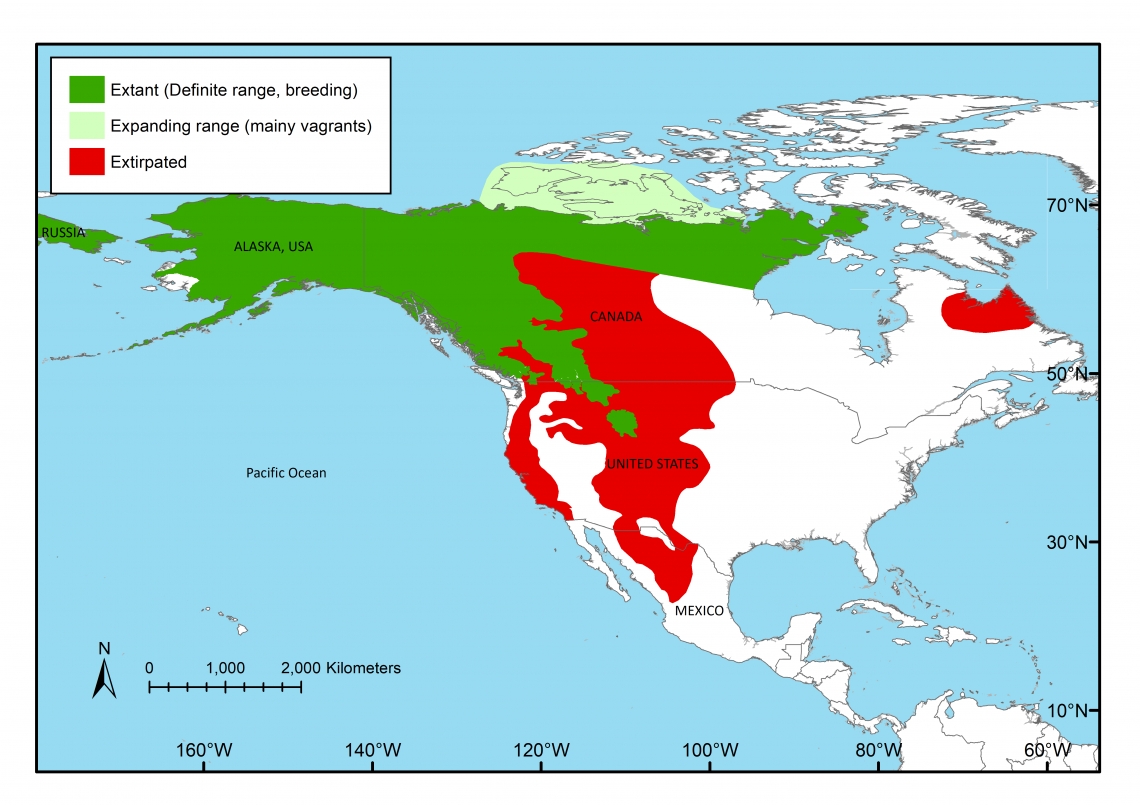
Range map of brown bear (U arctos) in North America mapped by Bear Specialist Group created by M Proctor
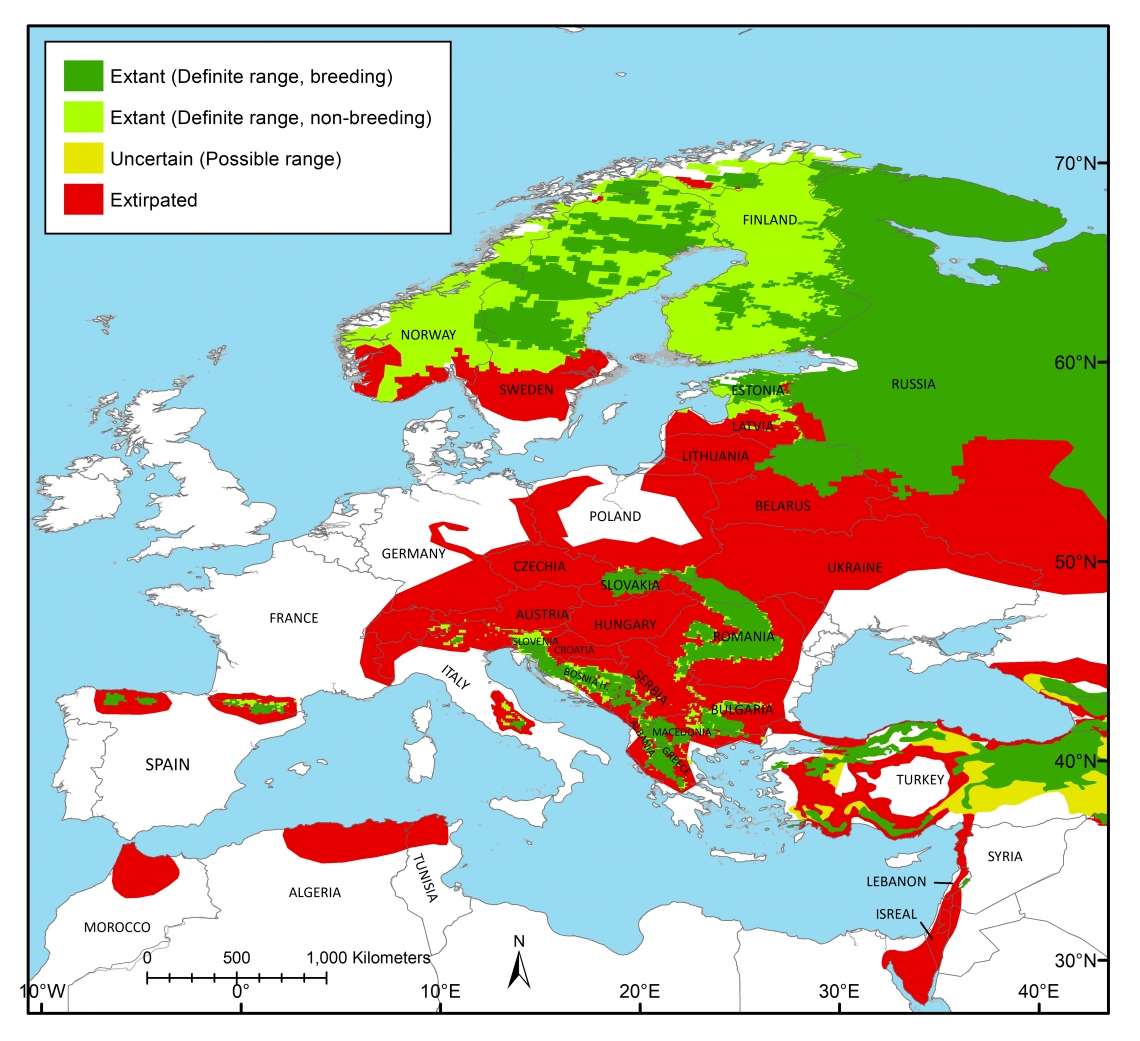
Range map of brown bear (U arctos) in Europe mapped by Bear Specialist Group created by M Proctor

Range map of brown bear (U arctos) in Asia mapped by Bear Specialist Group created by M Proctor
Range countries: (44)
North America
Resident: (2 countries) Canada, United States
Europe
Resident: (23) Albania, Belarus, Bosnia and Herzegovina, Bulgaria, Croatia, Estonia, Finland, France, Greece, Italy, Kosovo, Latvia, Macedonia, Montenegro, Norway, Poland, Romania, Serbia, Slovakia, Slovenia, Spain, Sweden, Ukraine.
Vagrant: (6) Andorra, Austria, Czech Republic, Germany, Lithuania, Switzerland
Asia
Resident: (19) Afghanistan, Armenia, Azerbaijan, China, Georgia, India, Iran, Iraq, Japan, Kazakhstan, Kyrgyzstan, Nepal, North Korea, Mongolia, Pakistan, Russia, Tajikistan, Turkey, Uzbekistan
Vagrant: (3) Lebanon, Syria; Turkmenistan; possibly Bhutan
Extirpation: Country-wide extirpations of brown bears occurred on all four continents where they existed, although primarily in the southern extent of their range. Most extirpations in Europe occurred centuries ago. Extirpations in North America occurred mainly in the last 100 years.
North America
Mexico (mid-1960s), many states in the western U.S., and provinces in central Canada including Saskatchewan, Manitoba (although recently recolonizing in the north), and an isolated population in northern Quebec and Labrador (which persisted until ~1910).
Europe
Belgium, Denmark, Hungary, Ireland, Liechtenstein, Luxembourg, Moldova, Monaco, Netherlands, Portugal, San Marino, United Kingdom, Vatican (plus several other countries listed above which only have occasional vagrants).
Asia
Bhutan (likely since mid-1950s)
Middle East
Israel, Jordan, Palestinian territory
North Africa
Algeria, Egypt, Morocco, Tunisia.
Elevational range: Brown bears are found from sea level along portions of eastern Asia and northwestern North America to over 5000 m in the Himalayas (tracks in snow recorded at 5500 m in Nepal).
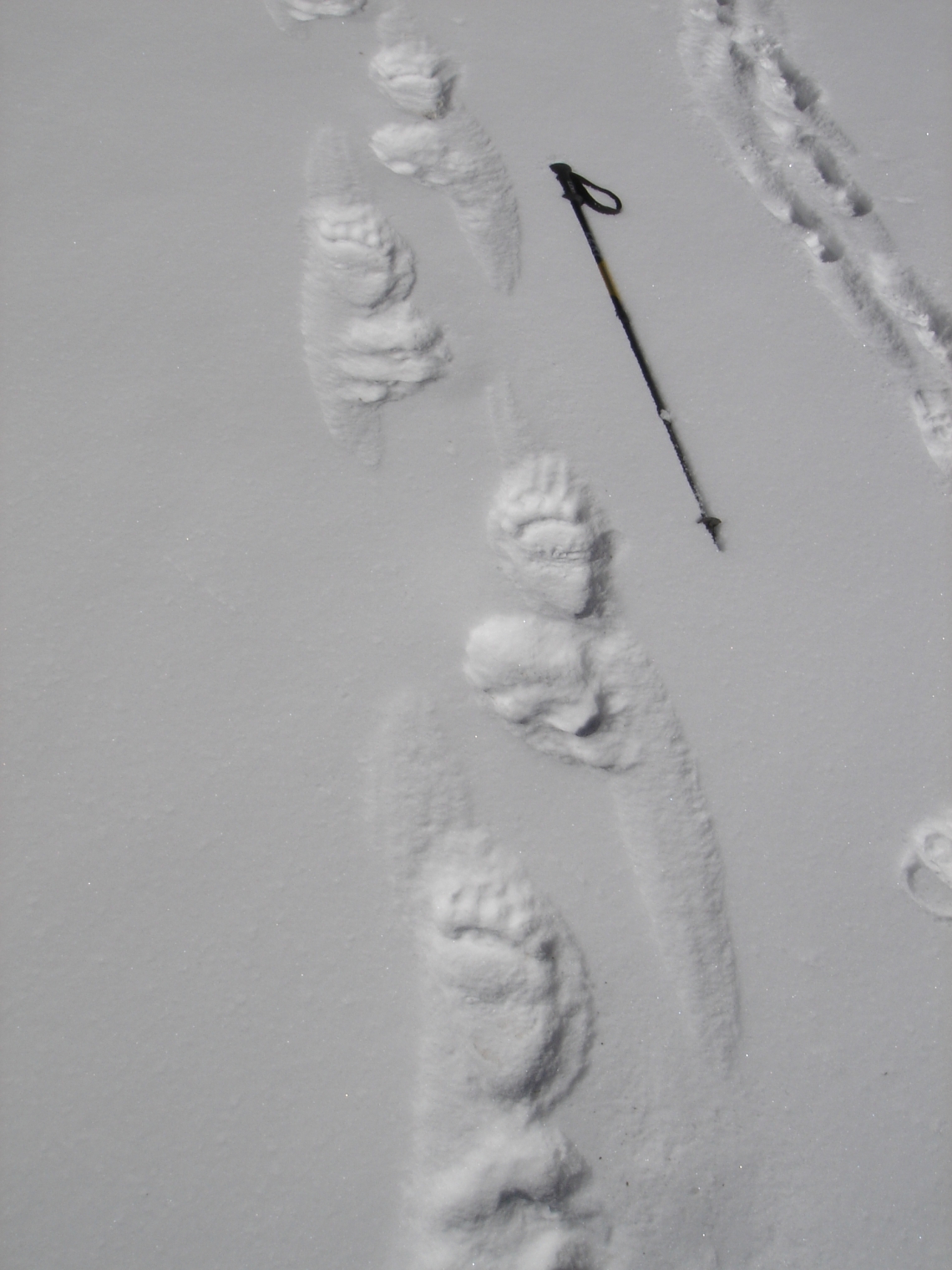
Brown bear_U arctos_Nepal_ bear tracks 5500m JPG
Overlap with other bear species: Brown bear distribution overlaps extensively with American black bears in North America, where they can compete for space and food, and somewhat with Asiatic black bears in northeastern Asia (particularly the Russian Far East). The northern distribution of brown bears also overlaps with the southern distribution of polar bears. Brown bears are moving north into polar bear regions in response to climate change, yielding the occasional brown–polar bear hybrid (grolars are male grizzlies mating with female polar bears; pizzlies are the reverse); some of these are fertile. There is even a place on the southwestern side of Hudson Bay (Wapusk National Park, Manitoba, Canada) where, for the first time, polar bears, American black bears, and brown bears have all been seen, although not all together at the same time.
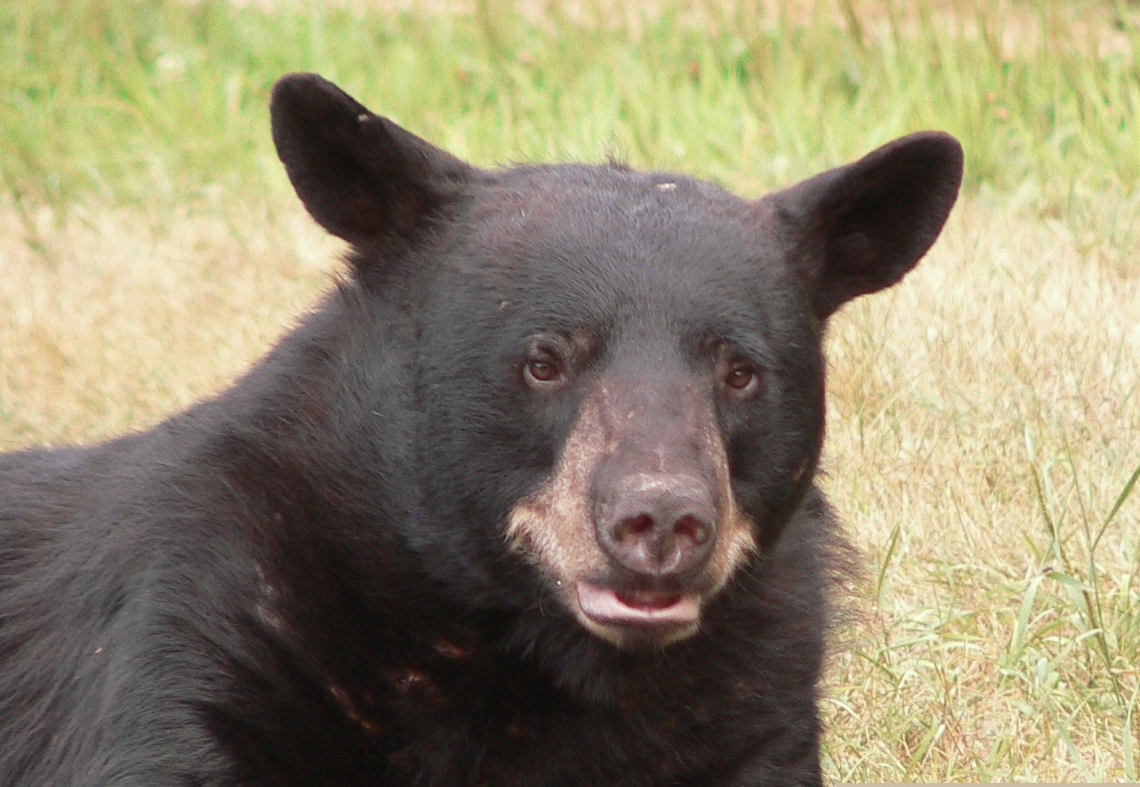
American black bear_U americanus_Minnesota_D Garshelis
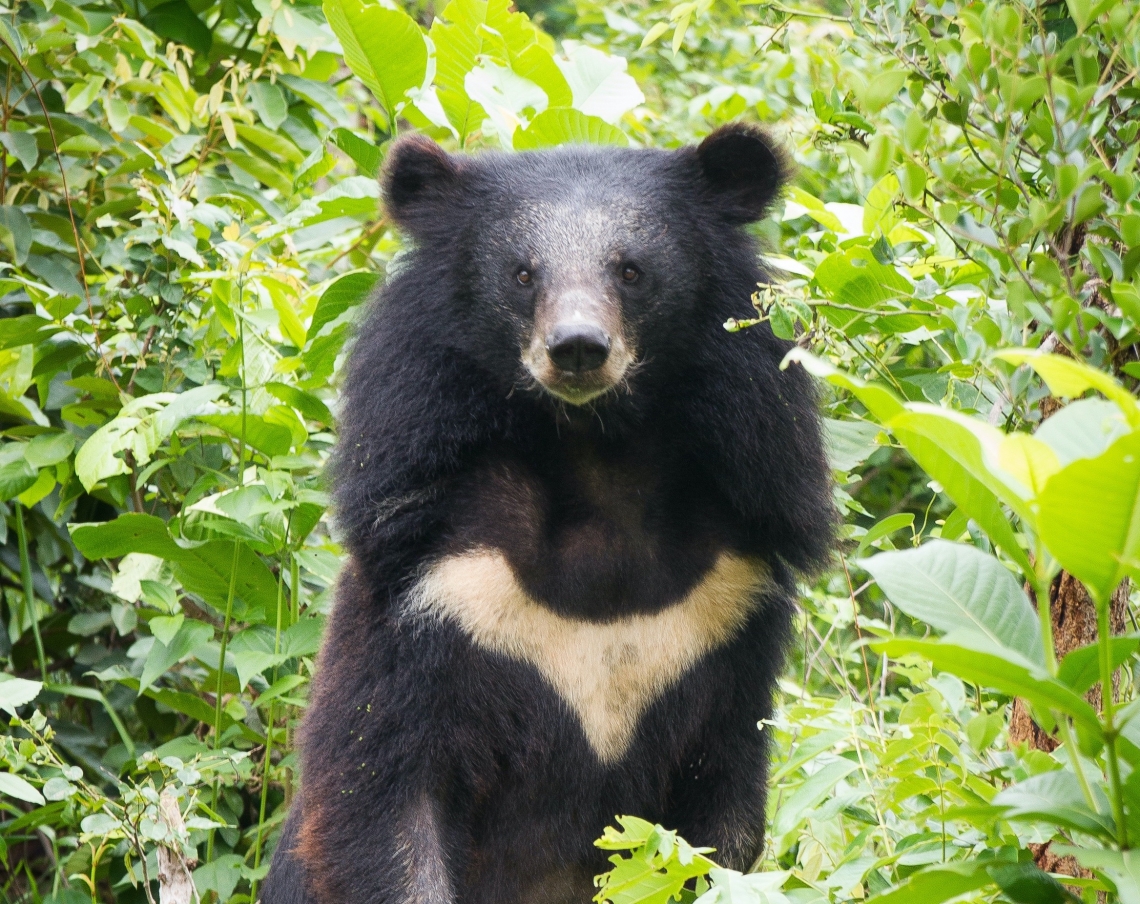
Asiatic black bear_U thibetanus_Cambodia bear sanctuary_Free the Bears
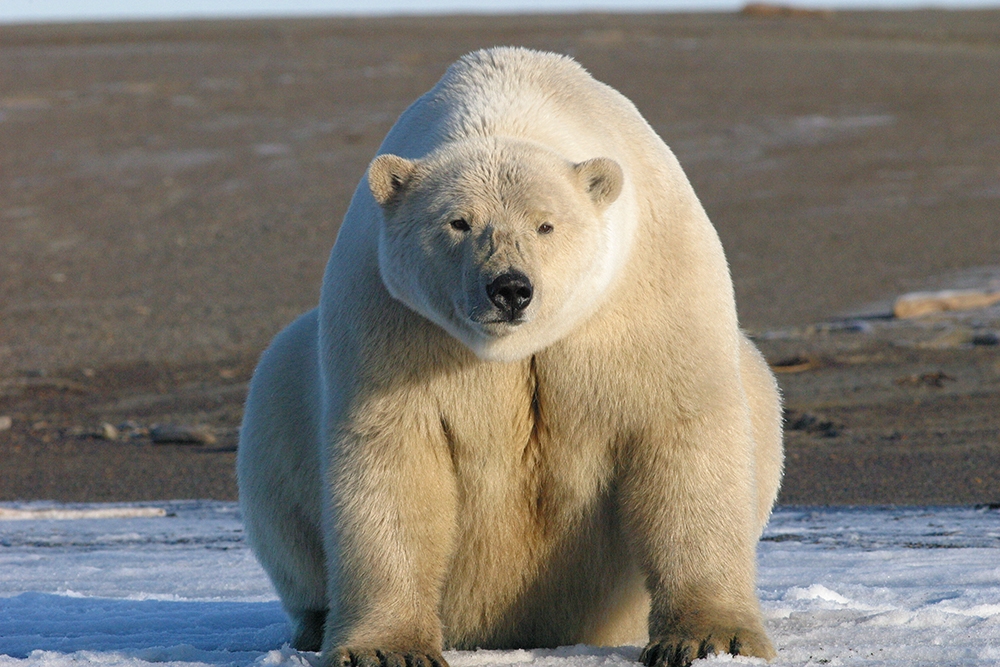
Polar bear_U maritimus_ Alaska_on shore_E V Regehr